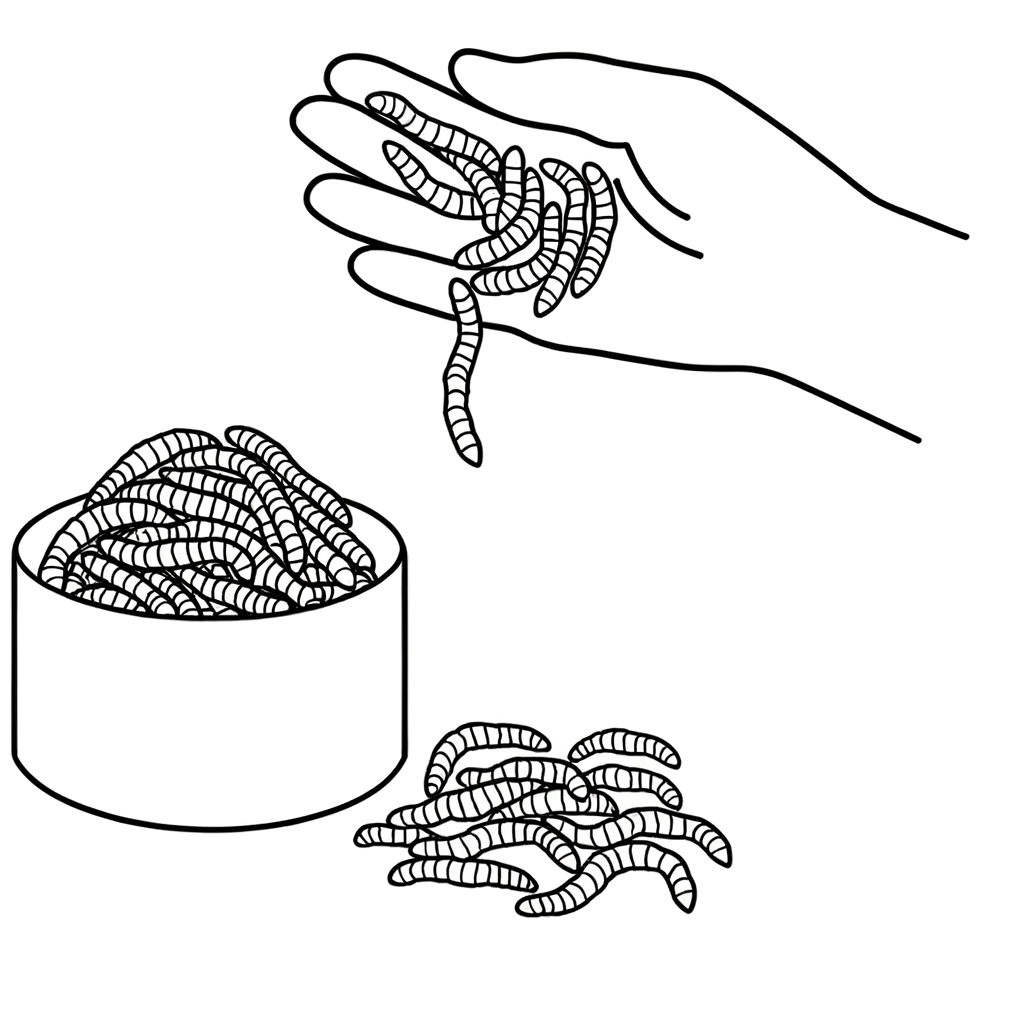Mealworm Protein: The Surprising Pros and Gross Cons You Should Know

Ever wondered what eating bugs could do for your gains? 🐛
Let’s face it – you’ve probably seen those videos of people munching on crickets or mealworms and thought “no way that’s going in my mouth.” But what if I told you that these little critters might be the future of protein?
Mealworm protein is making waves as a sustainable alternative to traditional protein sources like chicken, beef, and whey. And no, I’m not trying to gross you out – I’m genuinely curious about whether these tiny insects could be a legitimate addition to our protein lineup.
So should you be swapping your chicken breast for some crunchy bugs? Let’s dive into the science, benefits, and drawbacks of mealworm protein – with a healthy dose of my opinion sprinkled on top.
The Good Stuff About Mealworm Protein
Nutritional Powerhouse
These little guys are protein-packed. We’re talking about 50% protein by weight when dried – comparable to traditional protein sources. They also contain all nine essential amino acids your body needs for muscle repair and growth, similar to milk protein. For more on the nutritional benefits of insects, visit Britannica to learn about entomophagy.
Beyond just protein, mealworms deliver:
- Essential fatty acids (omega-3 and omega-6)
- Vitamins like B12 and E
- Minerals including calcium and iron
It’s like nature’s multivitamin wrapped in a crunchy shell. 💊
Environmental Superhero 🦸♂️
If you care about the planet (and you should), mealworm farming is ridiculously efficient compared to raising cows or chickens:
- Uses way less land
- Requires significantly less water
- Produces fewer greenhouse gases
- Needs less feed to produce the same amount of protein
One study found that producing 1kg of mealworm protein requires only 10% of the land needed for the same amount of beef protein. That’s not just better – it’s a complete game-changer for sustainability. Read more about sustainable food systems on webmd, including the benefits of mealworms.
The Not-So-Good Stuff
Your Body Might Not Love It (As Much)
While mealworm protein is as effective as whey for muscle synthesis, there’s a catch – chitin.
What’s chitin? It’s an indigestible fiber that makes up insect exoskeletons. This stuff can make mealworm protein less digestible than protein from animals without exoskeletons (like, you know, cows and chickens).
Your body basically has to work harder to get all the nutrients out. Not a deal-breaker, but something to consider if you’re optimizing for maximum absorption.
Your Wallet Might Feel It
Currently, mealworm protein is more expensive than traditional sources. This is mainly because the infrastructure for mass-producing insect protein is still developing.
It’s like any new technology – the early adopters pay premium prices until scale brings costs down. Remember when kale was cheap before it became trendy? Same idea.
The “Ick” Factor is Real 🤢
Let’s be honest – the biggest hurdle isn’t science, it’s psychology.
Most of us didn’t grow up eating insects, and the thought of munching on mealworms triggers an instinctive “nope” response. This cultural aversion is powerful and won’t disappear overnight.
Companies are working on this by processing mealworms into powders and flours that don’t look like bugs, but we’re still in the early stages of mainstream acceptance.
Regulation is Catching Up
The regulatory landscape for insect protein is evolving. Different countries have different rules about insect consumption, labeling requirements, and safety standards.
This uneven regulation can lead to confusion for consumers and challenges for companies trying to break into multiple markets.
What About Athletes and Fitness Enthusiasts?
If you’re hitting the gym regularly, you might be wondering if mealworm protein can support your gains.
Research suggests that while mealworm protein provides essential amino acids similar to soy protein, it doesn’t cause the rapid increase in blood amino acid levels that whey does post-workout.
In practical terms: Whey is still king for immediate post-workout recovery, but mealworm protein could be viable for general protein needs throughout the day.
For more information on sustainable protein sources and how insects compare, visit ncbi.
The Bottom Line
Mealworm protein isn’t perfect, but it’s a promising option with significant environmental benefits. As production scales up, prices will likely come down, and as more people give it a try, the “ick factor” might fade.
Would I recommend completely replacing your current protein sources with mealworm protein? Not yet. But incorporating some insect protein alongside your existing protein sources? That could be a reasonable step toward more sustainable nutrition.
The future of protein might just have six legs. Are you ready to take a bite? 🐛💪
